#BARDSEY
Text
5th April
St Derfel’s Day

Source: St Derfel Gadarn video posted by On This Day on YouTube
Today is St Derfel’s Day. Derfel was one of King Arthur’s legendary knights, known as Derfel Cadarn or Gadarn, meaning ‘the Strong’. He was present at the catastrophic battle of Camlann at which the disastrous civil war between Arthur and his illegitimate son, Mordred, culminated in the death of Mordred and the apparent fatal wounding of his father. With the court in Camelot collapsing in the aftermath of the battle, and the Saxons beginning to overrun Britain as a consequence, the distraught Derfel gave up soldiering for the monastic life.
So runs the Arthurian legend. Derfel however did exist and may well have been a Romano-British warrior in his youth. The battle of Camlann is supposed to have been a real event, taking place in 539, even if details are frustratingly vague. It is not even clear who the opposing sides were, but it is assumed to have been between the Romano-Britons and the Anglo-Saxons, with a Saxon victory being the likely outcome, so the outline of Derfel’s career change as described in legend, may well be based on fact.
Derfel became Abbot of Bardsey and later became the favourite saint at the church at Llandderfel, near Bala in Gwynedd. Apparently the church was equipped with a mechanical version of the saint , who showered blessings on the pilgrims that came to his church, often bearing livestock to be cured by Derfel’s effigy. Inevitably the Reformation interrupted this innocent practice and deeming the worship of Derfel’s peculiar statue as superstitious nonsense, militant Protestants carted the mechanical Derfel all the way to Smithfield in London in 1538 and burned it. The saint’s staff, and the remains of a wooden horse on which the martial Derfel sat, can still be seen in Llandderfel church.
8 notes
·
View notes
Text
THE MONASTERIES OF SCOTLAND - CLAN CARRUTHERS CCIS
THE MONASTERIES OF SCOTLAND
PREFACE
Many years ago I became fascinated by the re-introduction of the monastic life in the Church of England having in 1956 read a book by Peter Anson entitled “The Call of the Cloister”. Anson had been a novice in the community of Anglican Benedictines which had been founded in 1896 by one Aelred Carlisle as an attempt to once again establish the Benedictine…
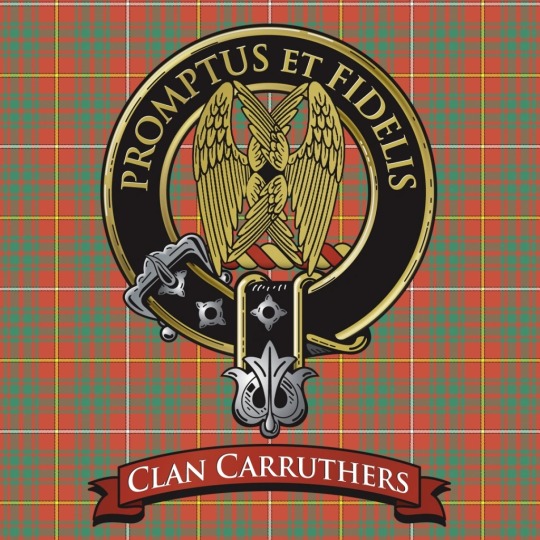
View On WordPress
#abroath abbey#aELRED cARLISLE#ANCIENT AND HONORABLE CLAN CARRUTHERS#APPLECROSS#ardchattan priory#aroath abbey#BARDSEY#CLONMACHNOISE#CO DONELGAL IRELAND#Coldingham#crossraguel cluniac#culdees#CULDRRS#deer abbey#fybie priory#iona#kilwinning tironian abbey#Oronsay priory#restenneth priory#saddel prioty#ST AIDAN#ST BEDE#ST COLUMCILLE#ST NINIAN#ST PACHOMIUS#st thomas becket#TALLAGH#trinitarian friars
0 notes
Text

Places to visit...
Bardsey Island
9 notes
·
View notes
Link
A Welsh Island called Ynys Enlli (Bardsey Island) became the first site in Europe to receive the designation of an International Dark Sky Sanctuary, joining just 16 others in the world. The island, which is 1.5 miles long and half a mile wide, has only two year-round residents and about a dozen during the summers.
“In a world that’s increasingly being polluted in every single way, having a pristine night sky at our doorstep still takes my breath away,” Mari Huws, who works as a warden on the island, tells the Guardian’s Steven Morris and Patrick Barkham. “It means that the night is alive—oyster catchers cry, Manx shearwaters swoop and owls glide. So much of the natural world is awake at night.”
International Dark Sky Sanctuaries are found in areas with exceptionally low light pollution that are at least partially accessible to the public and are “legally protected for scientific, natural, educational, cultural, heritage and/or public enjoyment purposes,” per the International Dark-Sky Association (IDA). Sites with this distinction are some of the most remote, darkest places on the planet. Their sky brightness must routinely be 21.5 magnitudes per square arc second or darker—in comparison, a theoretically perfect dark site would have a brightness of 22, while a city with a very polluted light sky could measure around 16 or 17.
IDA certifies sanctuaries following a “rigorous” application process. To apply, those on the island monitored the night sky for four years, writes Forbes’ Jamie Carter.
Ynys Enlli lies two miles off the tip of the Llŷn Peninsula in northwest Wales. The island itself is off the grid, and its 550-foot mountain acts as a barrier to limit light from the mainland, per a statement. The closest source of significant light pollution is Dublin, which is 70 miles away across the Irish Sea. Ynys Enlli is home to a nesting colony of about 20,000 nocturnal Manx Shearwater, which need dark skies to return to their burrows, Huws tells the Guardian. Nesting storm petrels, wood mice and a variety of moths also call the island home.
Humans have inhabited Ynys Enlli for at least 4,000 years, per the Bardsey Island Trust. Celtic Christian monasteries were built there starting in the sixth century, and Ynys Enlli became known as a place of pilgrimage and the “island of 20,000 saints.” After the dissolution of monasteries in 1537, pirates and marauders took over the island. Then, in the mid-eighteenth century, a farming and fishing community formed there.
Until recently, Ynys Enlli’s iconic 200-year-old lighthouse—the tallest square lighthouse in the U.K.—was a source of light pollution. The beacon’s white light was “catastrophic for birds and caused thousands of fatalities every year,” Dani Robertson, a Dark Sky Officer, tells Forbes. “The light was changed in 2014 from white to red, and overnight the fatalities stopped completely—it’s an amazing dark skies success story.”
The island’s certification comes as light pollution continues to increase across the world. A recent study found that between 2011 and 2022, global sky brightness increased by about 9.6 percent per year. Bright light at night can disrupt wildlife—including sea turtles, insects and birds—harm human health and reduce the visibility of stars.
“It’s a privilege to be able to work toward protecting something that is pristine for future generations,” Huws says in a statement. “I am always in awe of the island’s beauty—and the night sky is very much a part of that.”
#astronomy#light pollution#environmentalism#birds#britain#wales#bardsey island#ynys enlli#lighthouses#light
1 note
·
View note
Text
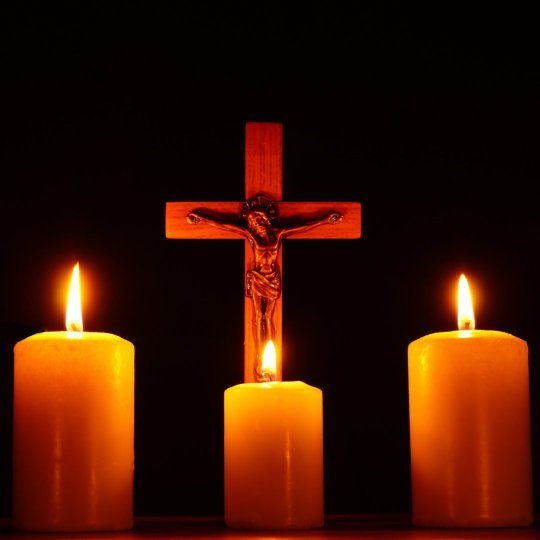
SAINTS AND MARTYRS for September 26
STS. COSMAS AND DAMIAN, MARTYRS, Being Christians, they were filled with the spirit of charity and never took money for their services. At Egaea in Cilicia, where they lived, they enjoyed the highest esteem of the people. When the persecution under Diocletian broke out, their very prominence rendered them marked objects of persecution. Being apprehended by order of Lysias, governor of Cilicia, they underwent various torments about the year 283. Their feast day is September 26th. They are patron saints of pharmacists.
St. Noel Roman Catholic Jesuit Martyr in 1643 was sent as a missionary to the Huron Indians in New France. He became assistant to Father Charles Garnier at the Indian village of Etarita in 1649 and was murdered on December 8 by an apostate Indian while returning from a visit to neighboring Ste. Marie. He is one of the martyrs of North America. Feastday Sept 26th.
ST SENATOR, MARTYR OF ALBAN
S. NILUS, ABBOTT, FOUNDER OF THE EXARCHIC MONASTERY OF SANTA MARIA IN GROTTAFERRATA, Nilus was born in 910 in the town of Rossano in Calabria. He was a Basilian monk, and then began to live the life of a hermit, dedicated to prayer and study. Toward the end of his life, he founded the famous Abbey of Grottaferrata, and became its first abbot.
St. Colman of Elo, 612 A.D. Abbot and bishop, also called Colman Lann Elo. He was born circa 555 at Glenelly, Tyrone, Ireland, the nephew of St. Columba, In 590 A.D.; he built a monastery at Offaly. He also founded Muckamore Abbey and became bishop of Connor. Colman was the author of the Alphabet of Devotion. He died at Lynally on December 26.
St. Meugant, 6th century. Hermit of Britain. Also called Maughan, Mawghan, and Morgan, he was a disciple of St. lIltyd and reportedly died on the island of Bardsey. He is the titular patron of churches in Wales and Cornwall.
5 notes
·
View notes
Text

Bardsey Island lies off the coast of the Lynn Peninsula in Northern Wales. It was considered the island where saints were buried but the myth of Merlin pervades this land. It is said that the treasures of Britain are buried here.
2 notes
·
View notes
Text


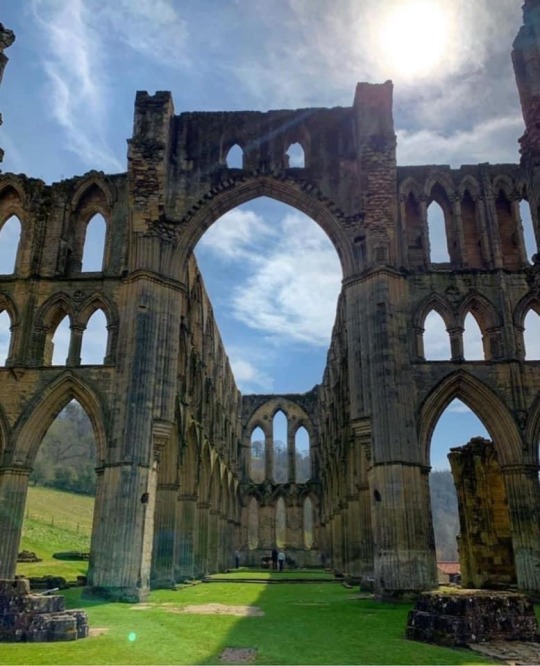
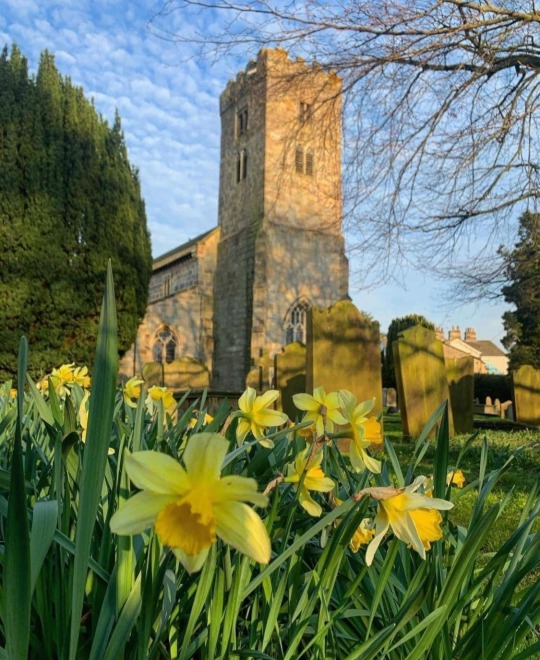

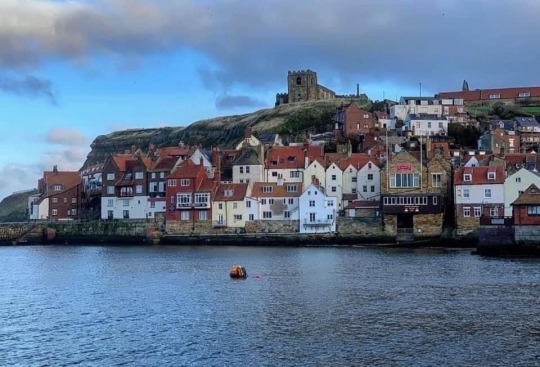
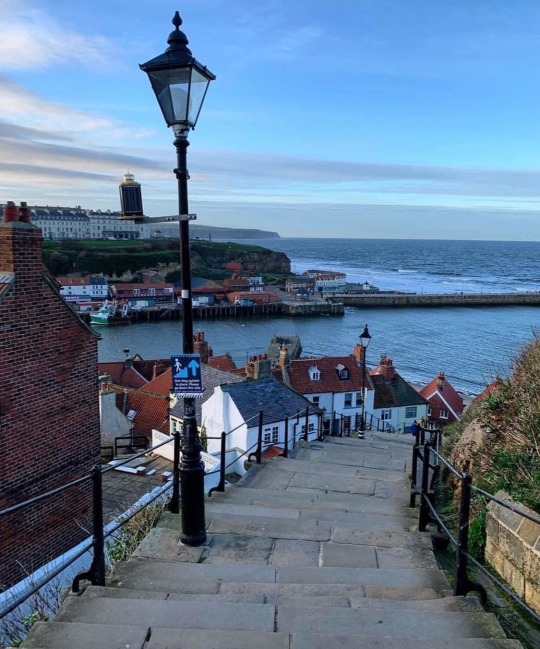
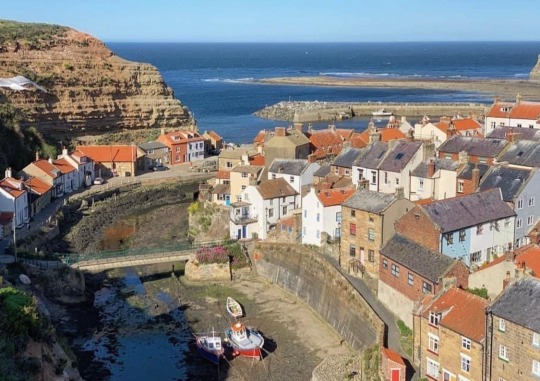

Ay up folks, its Yorkshire Day! A celebration every year on 1st of August of this wonderful, diverse and culturally rich part of England.
Yorkshire ties as my favourite region in England with Northumberland and I flip flop between which one we want to end up living in (The Yorkshire Dales or the Northumberland coast). From its wild moorlands of Bronte country, to its bustling industrial mill towns of Leeds and Halifax, to its beautiful seaside towns and fisherman’s villages, the rolling hills and drystone walls of the Yorkshire Dales and beyond it isn’t hard to see why Yorkshire has earned the moniker “God’s own country” by its proud inhabitants. So to celebrate this wonderful place here’s a few facts about York’shr.
Yorkshire is the largest county in the UK and covers a large part of Northern England, that’s a whopping 2.9 million acres- ee ba gum!. It is BIG, so big that over the years it was often subdivided into smaller jurisdictions for admiration purposes, most notably the areas of North Yorkshire, South Yorkshire, West Yorkshire and the East Riding of Yorkshire. While each of these regions certainly has its own distinct geography, accent, culture and history to explore, Yorkshire as a whole has always continued to be recognised as a geographic territory and cultural region. Yorkshire may be big now but it used to be bigger! Until 1974 it covered parts of what are now County Durham, Cumbria, Greater Manchester, Lancashire and the Tees Valley. Yorkshire also has nearly a third of the total area of National Parks in England (the North York Moors, most of the Yorkshire Dales and part of the Peak District) covering a fifth of the region’s land area.
Yorkshire also lays claim to being home to some of Britain’s ‘oldest’ things including the oldest known city in Britain, Ripon, which was granted a charter by at least 886. Scarborough on the coast was Britain’s first seaside resort, established in 1660 after the discovery of the ‘healing’ spring waters which later would form the spa. The oldest registered visitor attraction in England is Mother Shipton’s Cave and Petrifying Well in Knaresbough, North Yorkshire which has been welcoming tourists since at least 1630. Sheffield FC is the oldest football club in the world founded in 1857. The county is also home to Britain’s oldest pub (and perhaps the oldest pub in the world), The Bingley Arms in Bardsey dates from AD 953 to the days of the Vikings and has been serving beer for over 1,000 years. Speaking of pubs, Yorkshire is also home to England's highest pub, The Tan Hill Inn which sits 1,732 ft above sea level at a point where the counties Yorkshire, Durham and Cumbria meet. You might recognise it from the Christmas Waitrose advert where everyone got snowed in!
As well as the ‘oldest’, Yorkshire lays claim to some other great feats! The county has over 2,600 ancient monuments of national importance (14% of the English total), 800 conservation areas and 116 registered parks & gardens. The North York Moors Railway is the longest steam operated railway in the UK, with over 18 miles of track running through the countryside from Pickering to Whitby. The city of York has the longest city walls in England, at three miles long, and they enclose an area of around 263 acres. York Minster is the largest Gothic cathedral in Northern Europe, it took 252 years to build in its present form and contains 128 medieval stained glass windows and York’s Shambles is considered to be the best-preserved medieval street in Europe.
The emblem of Yorkshire, the white rose of the House of York is instantly recognisable for many and flies on flags across the county. The county is well known for its distinct culture, from its dialect to its food. This county gave us Parkin, Yorkshire curd tarts, Wensleydale cheese, Pontefract cakes and by far its most outstanding contribution to English culture; the Yorkshire pudding which makes up THE MOST IMPORTANT part of our Sunday dinner!
The unofficial anthem of Yorkshire is the popular folk song On Ilkla Moor Baht ‘at (“On Ilkley Moor without a hat”) which showcases some of the distinct words and pronunciations the region is known for. The dialect is old and has roots in Old English and Old Norse, being known as Broad Yorkshire or Tyke. Known for expressions like ayup, reet good, put ‘wood int ‘ole (close the door), shut thee cake oyle (shut your mouth) this county is still a glorious bastion of reet proper English as it was meant to be, home to northern and regional diversity that is fast disappearing. I will leave you to puzzle over this poem by about Yorkshire by Eric Scaife;
We’re a rare strange bunch ‘at live up ‘ere
But we’ve gradely grub an’ champion beer
An’ mony a famous name thou’l see
On Yorksheer own proud family tree.
Oor sportin’ ways are second ter none
Oor art an’ culture speak as yan
Us Yorksheer fowk ev Yorksheer ways
An’ when we say we laiks we plays.
Oor language is t’ English true
Oor thee, thou, tha’s are nothin’ new
Wi’ glottal stops an’ aitches dropped
The G at end is allus cropped.
So com’ thi ways to oor grand county
An’ sample sum o’ Yorksheers bounty
Oor ales are grand, oor looance too
An’ friendly fowk to welcome thoo.
🫖 🍰 🫖🍰🫖🍰🫖🍰🫖🍰🫖🍰🫖🍰
So today lads and lasses ‘sit thi sen darn’, put yus feet up, hav’ a proper brew of Yorkshire tea and enjoy some of my favourite photos I have taken around Yorkshire. Happy Yorkshire Day!
13 notes
·
View notes
Text
The first time I saw a picture like the one above I thought it was fake because I've never been anywhere you can see the milky way.
2 notes
·
View notes
Text

Wheatears, having a migration pit stop on Bardsey island in Wales.
They are cute little hoppy things with a distinctive white inverted T shape on their rumps, only visible in their small bursts of flight. This is where they get their name: 'wheat' from 'white' and 'ear' from... well, you know. Not their ears.
Female on the left this time, male on the right.
3 notes
·
View notes
Text
Febuwhump Day #16: Came Back Wrong
Febuwhump 2024
February 16th, 2024
Came Back Wrong
Chuck Mambo/Adrien Pike (OC)

Four hours.
Adrien Pike had stood on the dock behind the small Bardsey home he shared with his husband Chuck Mambo for four hours now. Not that Adrien was aware of that. The winter weather always seemed to change something deep within Adrien that Chuck couldn't explain to this day. Deep down, he knew it had something to do with the night that the House of Black had taken him from this world, had given Adrien the gift of control of the waters.
A gift that Chuck swore was a curse in moments like this.
The morning air was chilled and Chuck couldn't help his own shiver as he padded out to the dock, standing just behind his beloved. "How ya feeling there, Adri?"
"I'mfine," Adrien mumbled, voice low and slow as he gazed out to the skyline. He didn't look back at Chuck, made no acknowledgement of Chuck's arrival other than his mumbled answer.
"It's cold, Cap'n. How 'bouts we go in and I make us a nice breakfast?" Chuck moved to stand by his partner's side. He slowly, carefully, slid Adrien's hand into his own. He only wanted his partner to feel safe, to feel warm.
𝐓𝐨 𝐟𝐞𝐞𝐥 𝐚𝐧𝐲𝐭𝐡𝐢𝐧𝐠.
"Want to stand here," even Adrien's voice sounded stilted, frozen. Gone was the warmth and mirth that Chuck had fallen in love with. Adrien was normally so soft, so friendly. This version of him was wrong. "Want to watch the waves."
Chuck gave a small nod, pressing in closer to Adrien's side, his brow furrowed in worry. Adrien was cold to the touch and for the life of him, Chuck couldn't figure out if the cold was just the Bardsey weather or if it was his beloved's nature temperature now. In the long run, Chuck supposed it didn't matter.
This was his Adrien and he would do anything for him.
#febuwhump 2024#febuwhump2024#progress imagine#progress au#character: chuck mambo#character: original character#character: adrien pike
0 notes
Text
On This Day
24 January 1670
English politician, poet, and playwright William Congreve was born in Bardsey, West Riding of Yorkshire, England.

Portrait of William Congreve painted by Godfrey Kneller, 1709
William Congreve, probably the most well known playwright of the Restoration Comedy era, rose to prominence starting in 1693 with The Old Bachelor, followed by The Double-Dealer (1693), Love for Love (1695), The Mourning Bride (a tragedy, 1697) and his most famous comedy, The Way of the World (1700).
#theatre#theater#history#dramatist#dramatic literature#on this date#on this day#this day in history#william congreve#restoration comedy#comedy of manners#17th century#stage play#the way of the world#play rehearsal#light academia#classic academia#chaotic academia
0 notes
Text
Une île du pays de Galles devient le premier sanctuaire du ciel étoilé d'Europe
L'île de Bardsey, au pays de Galles, est devenu le premier site européen à recevoir la certification de sanctuaire international du ciel étoilé. Ce peti
0 notes
Text

SAINTS OF THE DAY FOR June 14
St. Anastasius XVII Roman Catholic Deacon and Martyr. A monk in the Benedictine monastery in Tabanos, near Cordoba, Spain, Anastasius was caught up in the persecutions conducted by the Muslim Moors. With St. Felix and St. Digna, Anastasius was beheaded for the faith. 853 A.D. Feastday June 14
St. Methodius I, Roman Catholic Priest and was exiled by Emperor Leo V the Armenian for refusing to yield to the imperial decrees on the destruction of icons. Feastday: June 14
St. Cearan, 870 A.D. Irish abbot called “the Devout,” also known as Ciaran. He was abbot of Bellach-Duin now Castle Kerrant, County Meath.
St. Dogmael, 6th century. Welsh monk of the house of Cunedda, the son of Ithel ab Ceredig ab Cunedda Wledig. He preached in Pembrokeshire, Wales, and then went to Brittany, in France. Several churches bear his name.
St. Elgar, 1100 A.D. Hermit on the isle of Bardsey, off the coast of Cearnarvon, Wales. He was born in Devonshire, England, and spent many years as a captive in Ireland.
St. Nennus. Abbot. From Ireland, he became abbot of monasteries on the isles of Arran and Bute. Nennus was the successor of St. Enda
ST. ELISHA, PROPHET
0 notes
Text
Welsh island Ynys Enlli becomes Europe's first dark sky sanctuary
Ynys Enlli, located 3 kilometres off the coast of Wales and also known as Bardsey Island, is now officially one of the best places in the world to see the stars
Space
23 February 2023
By Madeleine Cuff
An island off the coast of north Wales has become the first place in Europe to be awarded dark sky sanctuary certification from the International Dark-Sky Association.
Ynys Enlli, also known as…

View On WordPress
0 notes

